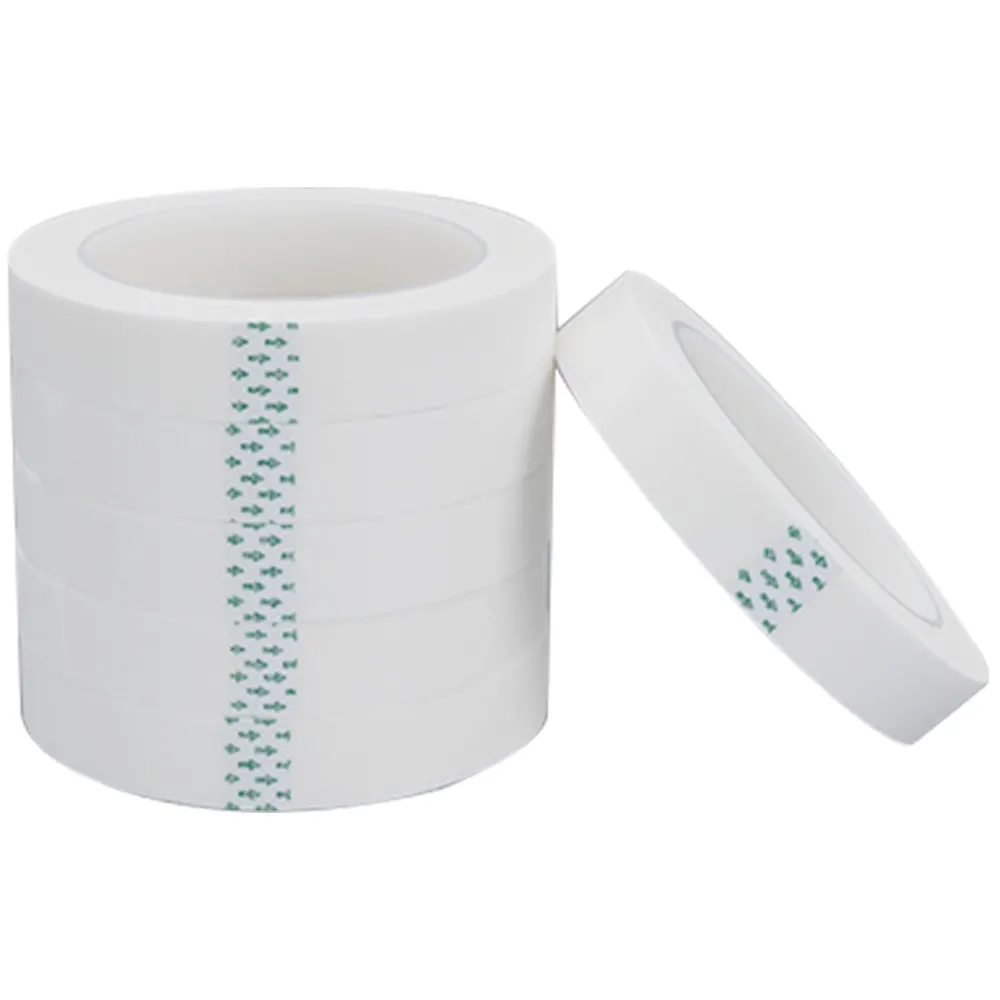Non woven Tape is flexible porous products consisting of one or more fibre layers. The separate fibres may either be preferentially oriented in one direction or may be deposited in a random manner.
They are bonded by chemical, thermal or mechanical processes into textile products. Non-woven Tapes are mainly planar structures. This relatively young branch of the textile industry has expanded enormously after the second world-war because of the high production rates and the resulting cost savings.
Non-woven tape is a multi-purpose adhesive tape. This tape has a non-woven texture and is permeable, where water and sweat can easily escape.
Non-woven tape is a type of adhesive tape that is made from a non-woven fabric backing and coated with an adhesive on one side. Non-woven Tapes are made from fibers that are bonded together through a process that does not involve weaving, resulting in a fabric that is more porous, breathable, and flexible than woven fabrics.
Non-woven adhesive tapes are used in a variety of applications, including wound care, surgical procedures, and medical device fixation. They are popular in the healthcare industry because they are breathable, gentle on the skin, and can conform to different shapes and contours. Non-woven adhesive tapes are also used in sports medicine to prevent and treat injuries, as well as in the construction industry for sealing and bonding applications.
Contemporary non-woven fabric dates to the early 1930s. At that time, a few textile companies began experimenting with bonded materials as a way of utilizing cotton waste. The first commercial production of the products now called non-wovens began in 1942 in the United States in an effort to produce fabric directly from fibres. The market for non-woven products has experienced tremendous growth and has potential for more.
Nonwovens may be classified as either disposable or durable goods. Disposable or non durable, nonwovens include such one-time use products as diapers, medical dressings, household wipes, and disposable protective clothing. Durable goods are used for apparel interfacing, automobile headliners, road underlayment, and carpets.
The Application Non Woven Tape?
The use of non-woven products continues to expand. The many uses of nonwovens may be classified as disposables, durable consumer goods, and industrial materials. All these areas are making increasing use of this kind of merchandise because of its low cost and its suitability for many needs.
Disposable nonwovens are essentially made for one time use; but some, such as dust cloths, may be laundered and reused a few times.
General applications include personal hygiene products, such as diapers and sanitary napkins; medical products such as surgical gowns and drapes; surgical and industrial masks, bandages, wipes and towels; bibs and even costumes for special events.
Durable nonwovens have wide applications. Consumer durables include both household goods and home furnishings, such as for draperies, furniture upholstery, mattress padding, towels, table cloths, blankets and carpet backing and clothing and apparel, such as for caps, linings, interlinings, interfacings and the reinforcement of other fabrics.
Many industrial uses include filters, insulation, packing materials, roadbed stabilization sheeting or road-building materials geo-textiles and roofing products.




